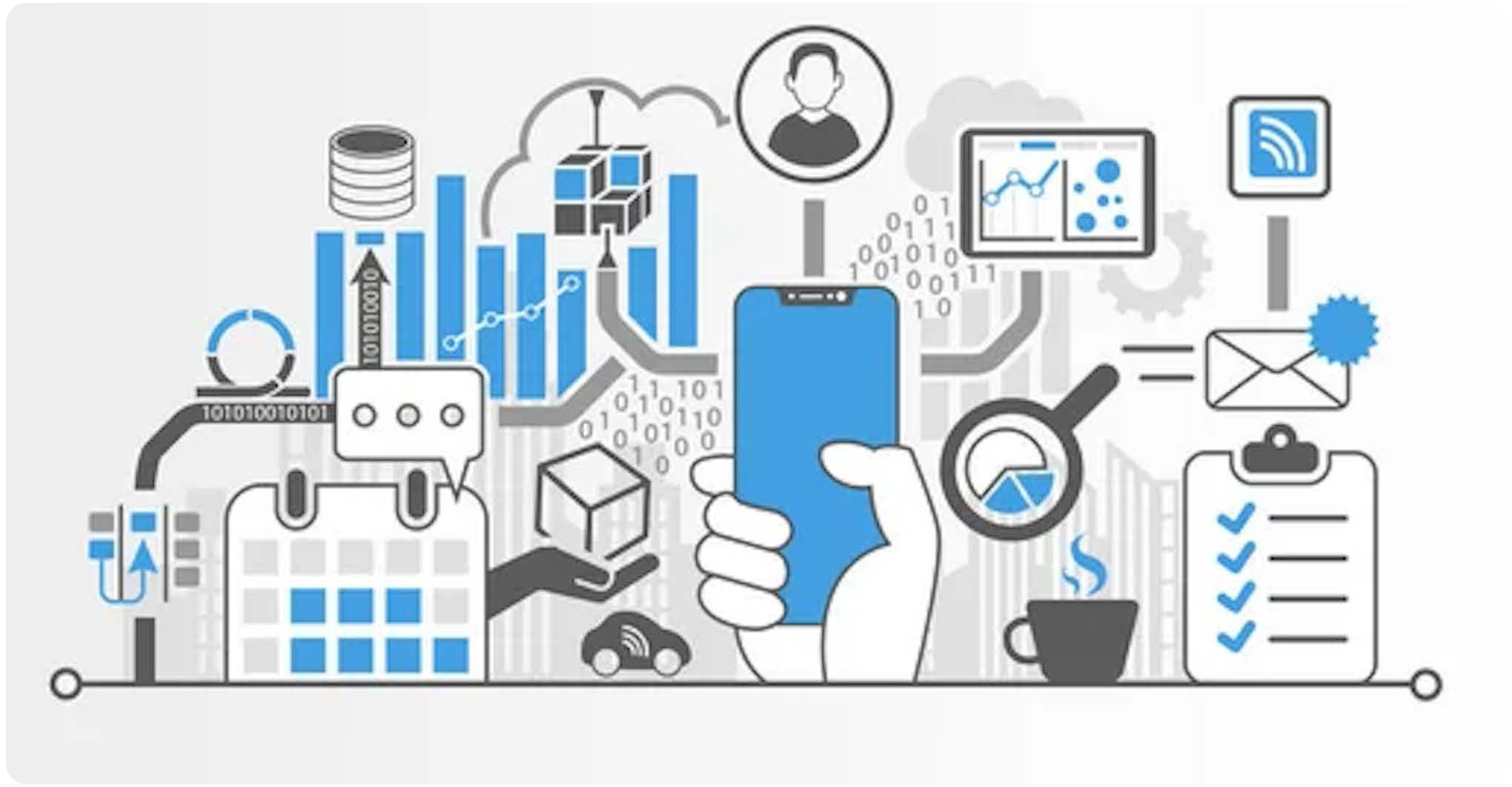I’ve been in Miami for two weeks, and I have mixed feelings about the city. I’m not sure if it’s because I’ve been bouncing from city to city, but I just can’t seem to find my place anywhere. On one hand, Miami radiates Latin warmth and energy which I identify with; on the other hand, it feels like the only
things that matter are money and BBLs.
Of course, this is just a superficial impression. I’m thinking about all of this on my way to the gym. I hop on the Stairmaster, and the screen next to me displays the usual gym TV fare: ads for condos and, of course, the news. Suddenly, a headline flashes across the screen: “The CEO of United Health has been killed, and the suspect left a note stating, ‘Frankly, these parasites saw it coming.’” It’s presumed he was referring to the healthcare industry as a
whole.
My first thought? Honestly, I kind of get it. When I worked as an attorney defending insurance companies against potential lawsuits, I often wrestled with the morality of it all. I was constantly aware of the industry’s dark practices, and I’d find myself questioning whether I was on the right side. I acted like I was advocating for patients, because deep down, I knew the system was profoundly unfair.
Then the next news headline appears: “Antarctica is melting at an alarming rate.” Chale, this feels like the opening scene of every apocalyptic movie, the moment where you know the world is about to really fall apart. We deserve it, it’s all our fault. I finish my workout and continue my day, half-hoping for something extraordinary to happen, like aliens or something. That would be sick! Something that would make us realize we’re not as smart or as special as we think we are. I’m waiting for a shake-up, something to pull us out of this self-destructive behavior.
Later that day, another headline reads: “Google launches Willow, the quantum computer chip that could prove the theory of the multiverse.” QUEEEEEE? Now, that’s the kind of news I’ve been waiting for. I was tired of human selfishness. Like Jim Carry said, Grinch didn’t really hated Christmas, he hated people. But finally, things are getting interesting.
Both the economy, society, and workforce are about to change drastically, and this means that ideas generated by human intellect (now in conjunction with machines) are taking on a whole new dimension. What this means is that my profession as a lawyer is going to change. I had always felt that the way the profession was practiced didn’t resonate with me, but only now do I understand why: I was thinking about the future, anticipating a new way of
helping businesses navigate this journey—still unknown to many.
The future holds millions of hypotheses, good or bad. It is our goal and duty as humans to work toward a positive hypotheses. One that allows us to grow and evolve as humans, get to the next level of consciousness.
This blog is for those who think about the future, about how we solve the problems we face today, many of which we’ve created ourselves, and how we fix them. Stop worrying about your purple Ferrari or your big fake boobs (iugh) and really work towards creating a better future. How do we evolve human consciousness and move past material things like money? The solution: Technology. And not just any technology—this is the new era, web 3.0, which makes us question whether we are truly indispensable.
In short: Absolutely not. Some of us will evolve and others will become obsolete. What’s your choice?

What do I mean by this? There are 3 fields that are transforming the world as we know it: the 3 pillars of transformation for the new era.
1. Blockchain
2. AI
3. Quantum Computing
The present moment is imperative, offering us the opportunity for participate in humanity’s greatest transformation. I know, I sound philosophical, but we are really at the beginning of using technology to drive human evolution. And the primary driver is Intellectual Property.
1. Blockchain
Every interaction I have with someone outside the blockchain space seems to revolve around a single use case for crypto: economic value. Whether it’s directors of marketing, attorneys, or taxi drivers, that’s the one aspect they recognize—or, more accurately, the one they understand.
Unfortunately, the industry has struggled with scammers, regulatory hurdles, and a failure to clearly communicate blockchain’s real use case potential. Crypto bros, with their hype-driven approach, have only added to the negative perception, focusing more on trends, creating cults and promoting specific stereotypes than on educating consumers.
That’s why it is very relevant educate others about what blockchain truly represents: decentralization, the removal of power from middlemen, and the promise of a more democratized internet and economy.
Whether or not we fully achieve it, if more people are able to understand some key aspects of the technology, they’ll actively seek out and demand these innovations, rather than blindly adopting new apps as we’ve done in the past. Education is power, and sharing knowledge is essential for progress.
The word “currency” traces its etymology back to the Latin term currere, meaning “to flow” or “to run.” Currency can be understood as the “condition of flowing.” This concept of flow can apply to much more than money. It encompasses social interactions, values, and even energy.
Blockchain and Bitcoin infrastructure embody this idea by creating the value and trust foundation for a new era. They are transforming how value is created, measured, and distributed through trust-based mechanisms. Unlike traditional currencies, which are often rooted in debt and susceptible to manipulation, Bitcoin derives its value from mathematical truth and network consensus. The true opportunity of this technology lies in how authentic contributions can inherently generate economic value. If a group of people (forming a network) believes that truth is a form of currency and therefore that value supports the system, truth will gain value through collective trust and participation. This shift represents a groundbreaking redefinition of how we perceive and interact with value in the modern age.
This is HUGE. We could reward contributions and positive behavior in a way that shifts the paradigm. In a world that often seems to value selfishness and negative emotions above all else, this could represent massive change in what is valuable to us, changing the whole system.
Imagine someone sharing a deeply transformative personal story, and the system calculates its resonance and impact, generating promotional gas tokens as a reward. Blockchain technology can be used to track how truth-telling and authentic expression contribute to the collective well-being of a community or network.
By rewarding individuals who catalyze collective transformation through genuine contributions, we create a system that encourages authenticity and connection, paving the way for a more meaningful and equitable future.
How does this relate to Intellectual Property?
The ethos of blockchain revolves around creating software by the community, for the community. This means that software developed for a specific blockchain project is typically open source. The code is publicly available for anyone to use, modify, and distribute with minimal restrictions. In other words, everyone is free to use the IP created by others.
Contrast this with platforms like TikTok, Instagram, or Facebook, which operate as closed ecosystems with proprietary software. Their code is tightly guarded and inaccessible to the public. Blockchain’s open-source philosophy challenges this model, prioritizing collective growth over exclusivity.
From my experience with clients, those who truly seek to disrupt existing systems using emerging technologies share a common goal: to provide value to the people within their network. They focus on rewarding individuals with currencies beyond just money and, most importantly, build systems that serve their customers rather than the company’s own interests. Intellectual Property plays a key role in this process, enabling companies to create high-value, intangible assets that can drive innovation and foster long-term success.
Open source has nothing to do with reducing the value of your Intellectual Property. A company can still protect and leverage other aspects of its IP effectively. When humans collaborate, it’s a beautiful thing. Well executed open-source projects grow particularly because of shared innovation.
If a company is creating valuable IP, the network will naturally want to be part of that creation, and consumers will look to the project for guidance on leveraging IP while honoring the project’s ethos. A company that protects its IP and demonstrates its relevance from day one builds greater value in the long-run.
The brands we remember (whether it’s for a character, a mark, a slogan, or even a piece of code) are the ones that leave an unconscious impact on our minds. The magic of IP lies in its dynamic nature, which allows businesses to craft a holistic strategy for their intangible assets. And yes, it’s more than filling trademarks.
From my experience in this field, truly valuable Intellectual Property transcends being just an asset. It often carries emotional value. Something money simply cannot buy. When done right, IP becomes more than material; it becomes eternal.
Now imagine open-sourcing code that incorporates IP so powerful it carries a currency in the form of values like love and trust. This emotional currency could guide a project’s ethos, ensuring the value consumers derive is rooted in these principles. By leveraging blockchain, (not just the technology but also what it stands for) we have the potential to reshape society in meaningful and impactful ways.
In future posts, we’ll dive into specific examples that highlight how growth and innovation in the space are deeply tied to robust IP strategies.
Let’s go deeper and nerdier (:
2. Artificial Intelligence
AI systems will (soon) probably achieve consciousness interface capabilities, and that’s not necessary a bad thing. Technology, by nature, is neutral. It’s us who decided how we use it, whether for good or evil. By using AI for are repetitive tasks like email, management, scheduling and basic decision-making, we can create the space to focus on heart-centered consciousness and higher-order thinking.
For instance, instead of spending hours organizing information, AI can automatically categorize, prioritize, and synthesize data based on truth alignment and value potential. This shift enables us to transition from survivor-mode to creator-mode. In other words, we will be able to fully focus on finding our life’s purpose.
This is truly magical, as creation (whether by humans or machines) is at the heart of Intellectual Property. Every individual will have the opportunity to generate intangible, valuable assets that not only drive the economy but also contribute to the advancement of humanity.
How will applications help us achieve this?
AI is really good at recognizing patterns far better than we can, thanks to its ability to process vast amounts of data. This means that AI applications will be able to provide real-time feedback, detecting misalignments between our actions and our values or truths, and offering specific guidance for realignment.
Actions speak louder than words. With the data we provide through our actions, tools like Alexa will come to know us better than we know ourselves. They’ll be able to recommend choices and paths that align more closely with our true selves, helping us navigate life with greater clarity and purpose.
Let’s look at real world use case: DJ Xavier from Spotify, the platform’s new AI feature. First off, the name is genius-well done, Spotify! They used the voice and personality of Xavier Jernigan, Spotify’s Head of Cultural Partnerships, to bring this feature to life. His voice is a perfect match for the vibe of a Miami radio station. DJ X utilizes generative AI to curate a personalized radio playlist based on your interests. He provides context to the songs, addressing you by name as if the radio host was speaking directly to you. It plays music you already know and introduces you to new one.
This feature also encourages you to explore different genres and moods. It’s designed to improve over time. The more you interact with it, the better it understands your vibe. And the best part? Your vibe doesn’t have to fit into just one genre. We’re multifaceted beings, and DJ X embraces that by adapting to your changing tastes, creating an experience that feels uniquely yours. This an amazing way to gather meaningful data.
When we think about intellectual property, we can look at the AI algorithm developed by Spotify, as well as the design elements of DJ X, like the subtle nod to the Spotify logo and the animated mouth movement. The entire experience with DJ X is infused with IP elements.
Because Spotify executed the design so uniquely and effectively, they were able to secure a design patent. Moreover, Spotify has applied for and been granted patents related to its running features, which allow your music to adapt to your pace and cadence. Recently, they also filed a patent for a new feature called Cuepoints, enabling listeners to crossfade between tracks in a playlist, just like a DJ.
Coming back on how AI can allow us to evolve, is in issuing recommendations by identifying when an individual is ready to overcome a particular limitation and suggesting relevant truth-revealing opportunities. This is where AI shines, as it’s highly adept at recognizing human patterns. By analyzing speech patterns, facial expressions, and behavioral cues, AI can aid in diagnostics and even detect mental health conditions.
Although this is still a controversial topic, there are already applications like SenseToKnow that allow parents to screen their children for early signs of autism, providing accurate assessments and facilitating timely interventions if necessary.
Now, imagine that in the near future you will be able to have your own personalized AI—your version of ChatGPT—that can analyze your day-to-day patterns, identify what’s holding you back, and guide you toward adopting more positive habits. This evolution of AI could empower us to live more aligned and fulfilling lives.
3. Quantum Computing
With the recent announcement from Google about its new chip, Willow, the capabilities of quantum computing are growing exponentially. While experts say we still have some time before its commercial exploitation, this is a game changer for humanity.
This technology doesn’t just process information. It directly interfaces with the fabric of reality (mind-blowing) to maintain universal coherence. For those who may not know, the universe is built on quantum mechanics. The smallest particles known to humanity are the very ones that create the material world we experience, and they are governed by laws that we can’t fully comprehend because they are counterintuitive.
Let’s say, this is complex shit.
At high level (and as my legal brain is able understands) quantum computing operates in multiple states simultaneously, tapping into multiple realities. This unique capability allows these computers to compare information across all possible outcomes, essentially evaluating all potential truths at once. It’s like being able to see every possible scenario for every decision you make in life. While we humans can only experience one choice at a time, quantum computers can perceive them all. Ay, wey!
All matter in the universe emits a vibration or wave, whether it’s a human, a rock, or anything else. Everything exists within a vibrational field. We now understand that emotions also emit unique frequencies or vibrations. Emotions like love, peace, and acceptance resonate at higher frequencies, while hate, shame, and revenge vibrate at lower ones. This is why often furniture stores have decorations with “vibe high” signs without people actually understanding what it means. In in practice, it means live in higher frequencies.
Of course, we all want to vibe high, but hey, life can be hard, and sometimes it just sucks. Here’s where quantum systems come into play. They have the potential to recognize truth (positive frequencies) by detecting coherent wave patterns within the quantum field a space where all realities coexist.
Quantum computers can be protected under various types of intellectual and industrial property rights, including semiconductor topography rights, patents, copyrights, trade secrets, design rights, and trademarks.
IBM stands out as the leading patent holder in quantum computing, with an impressive portfolio of 3,953 patents, and continues to dominate in the realm of quantum information science. Intellectual property filings are often correlated with innovation, and IBM is widely regarded as one of America’s most innovative companies. While the specifics of IBM’s patents are beyond the scope of this discussion, it’s clear that these advancements mark a significant leap forward in technology.
At present, quantum computing IP remains largely within the bounds of traditional protection mechanisms. However, the transformative potential of quantum computing means the very nature of intellectual property could change in ways we cannot yet foresee.
Imagine a future where these systems continuously monitor the coherence of information flowing through them, offering feedback on truth alignment. Such capabilities could extend to measuring personal communications, group dynamics, and even the integrity of entire social systems.
Another groundbreaking application could involve the global monitoring of resource distribution, instantly detecting imbalances or concentrations of wealth that fail to align with authentic contributions to collective progress.
This raises profound questions: Who will own such technologies? Will their applications belong to humanity as a whole? Could these new forms of intangible assets become collective human rights? We simply don’t know yet.
Don’t let this overwhelm you! Do let it expand your perspective. It’s humbling and awe-inspiring to realize how small yet impactful we are in the grand scheme of things. If you’d like a deeper understanding of how quantum computers work, check out this insightful video by Cleo Abram-it breaks down the complexity in a visually engaging way.
Thank you for reading, I hope I left you thinking in your own existence.
Fer
Fernanda Hinojosa
Emerging Technology Attorney
Advising clients through every stage
of their IP journey–from strategy
& protection to enforcement
and litigation.
United States and LATAM

